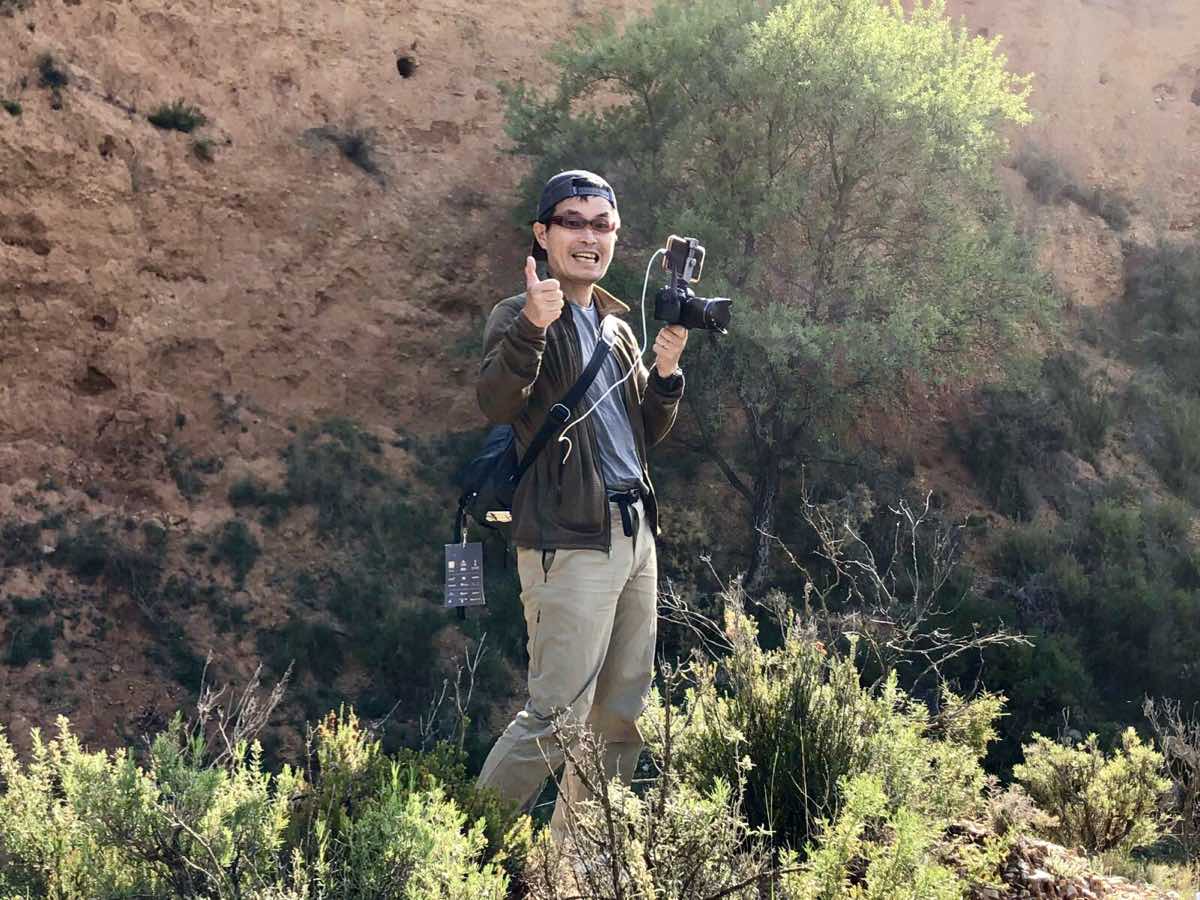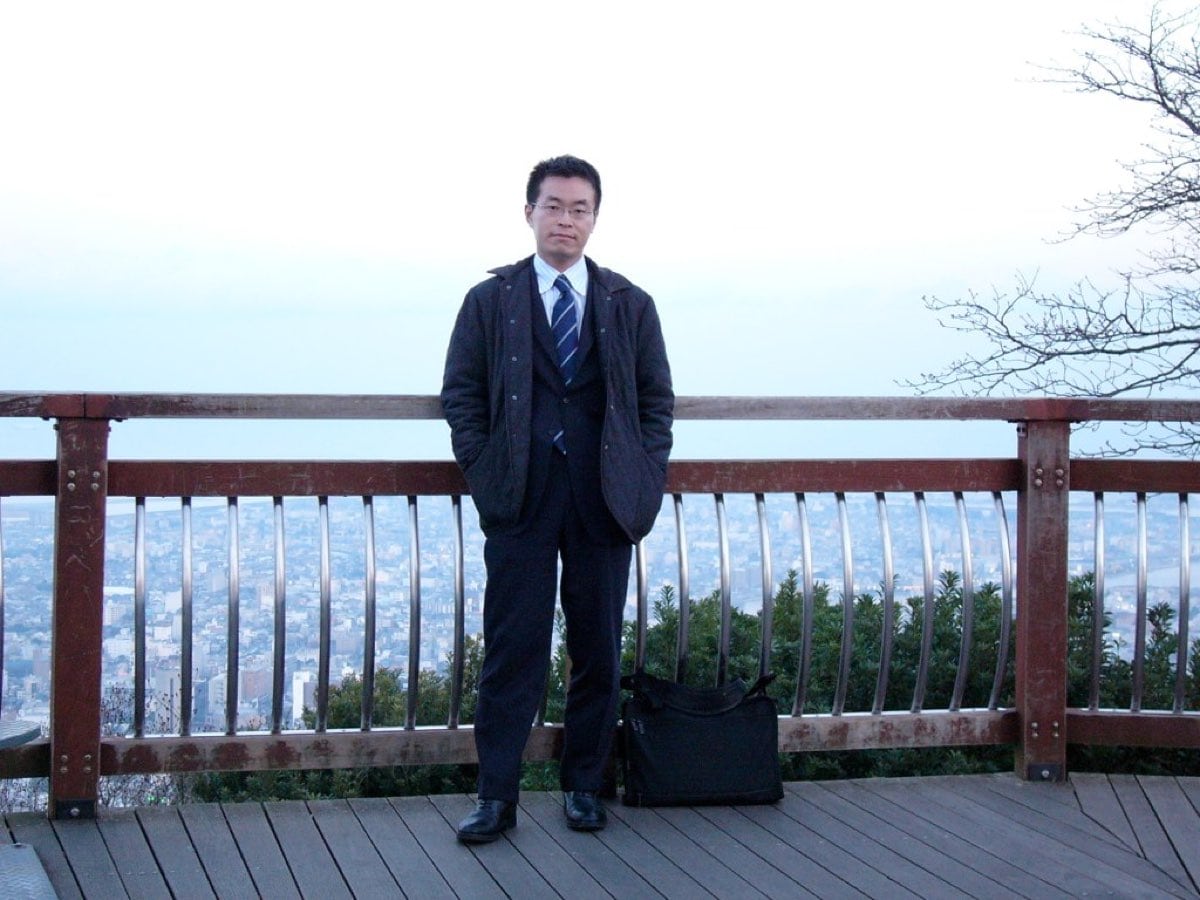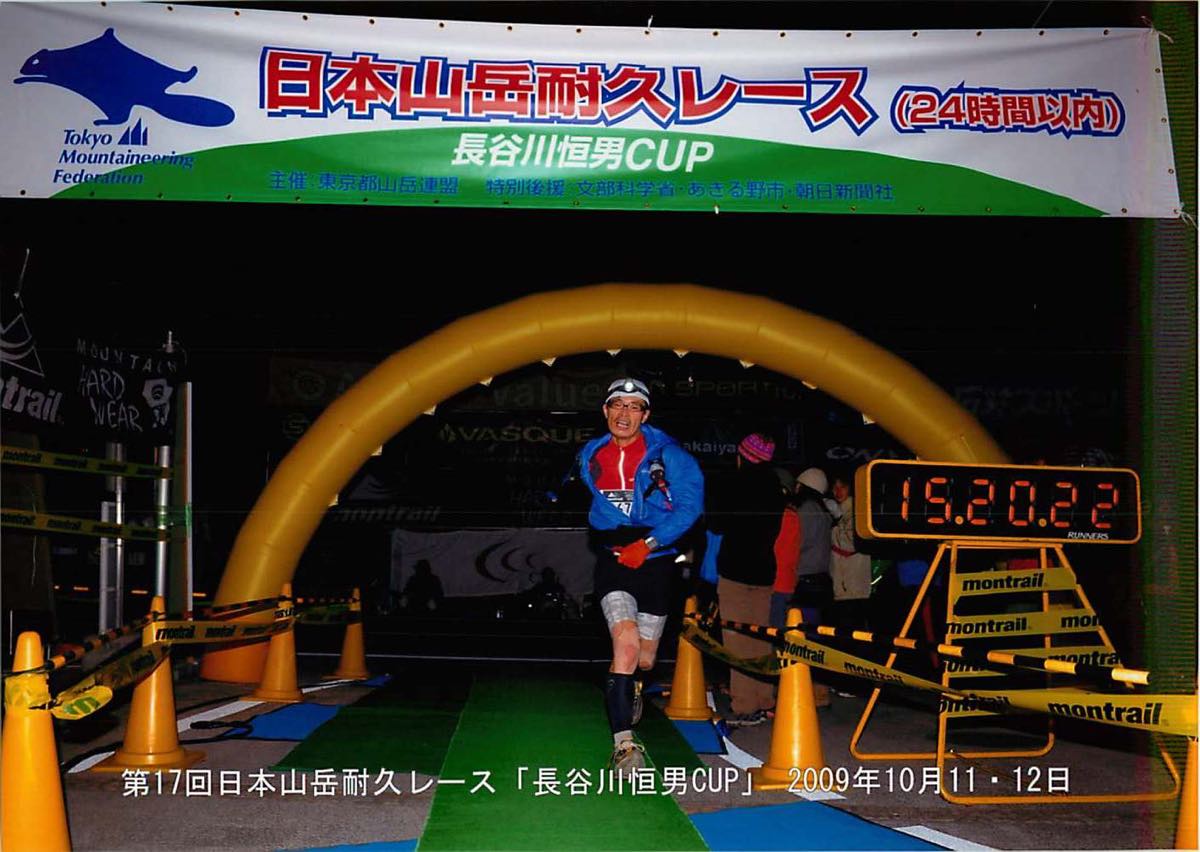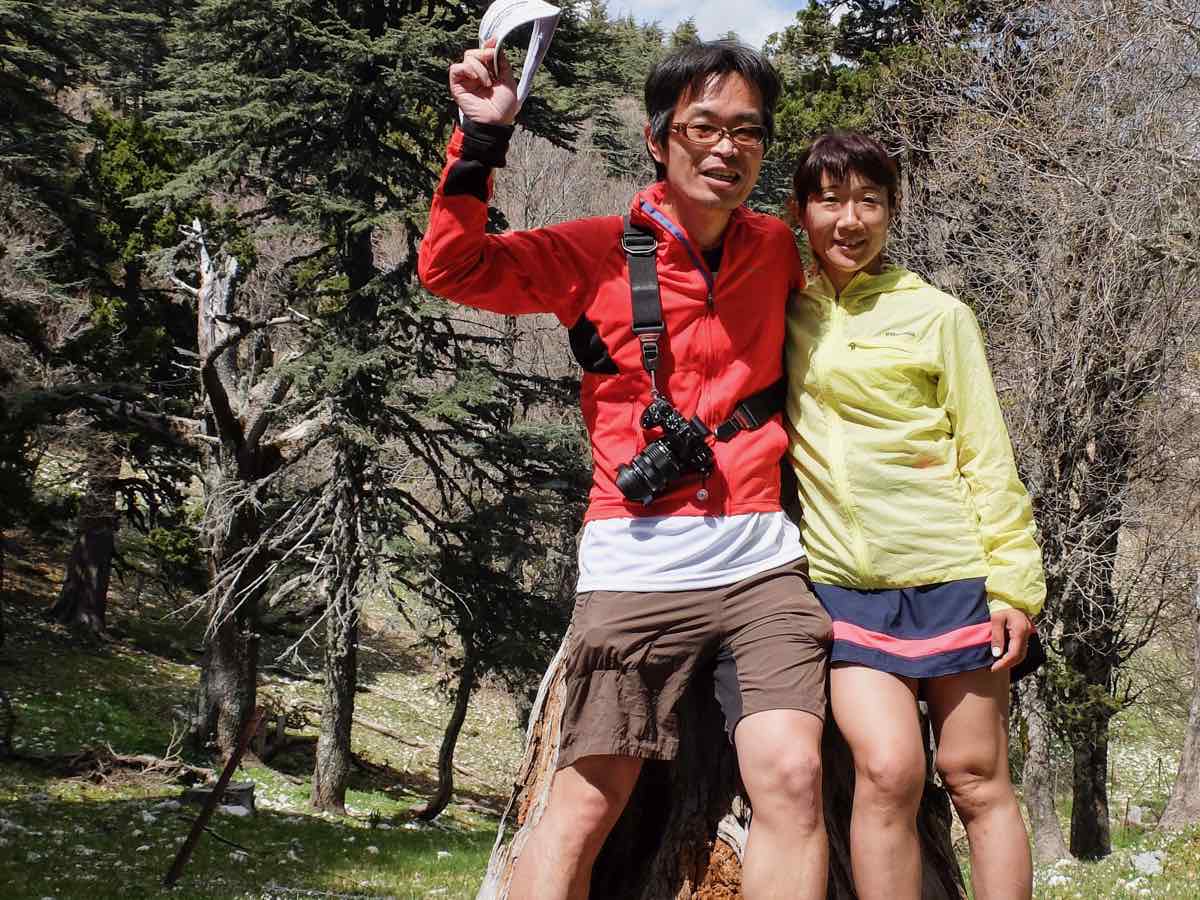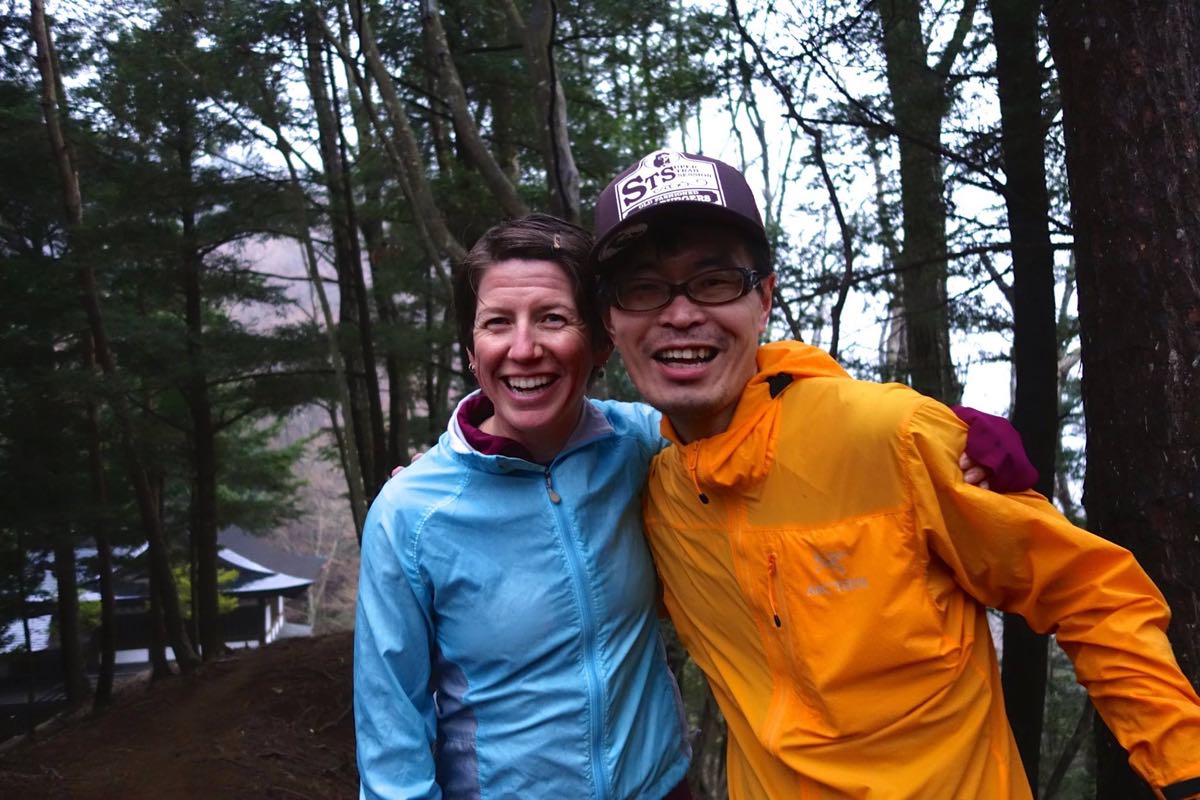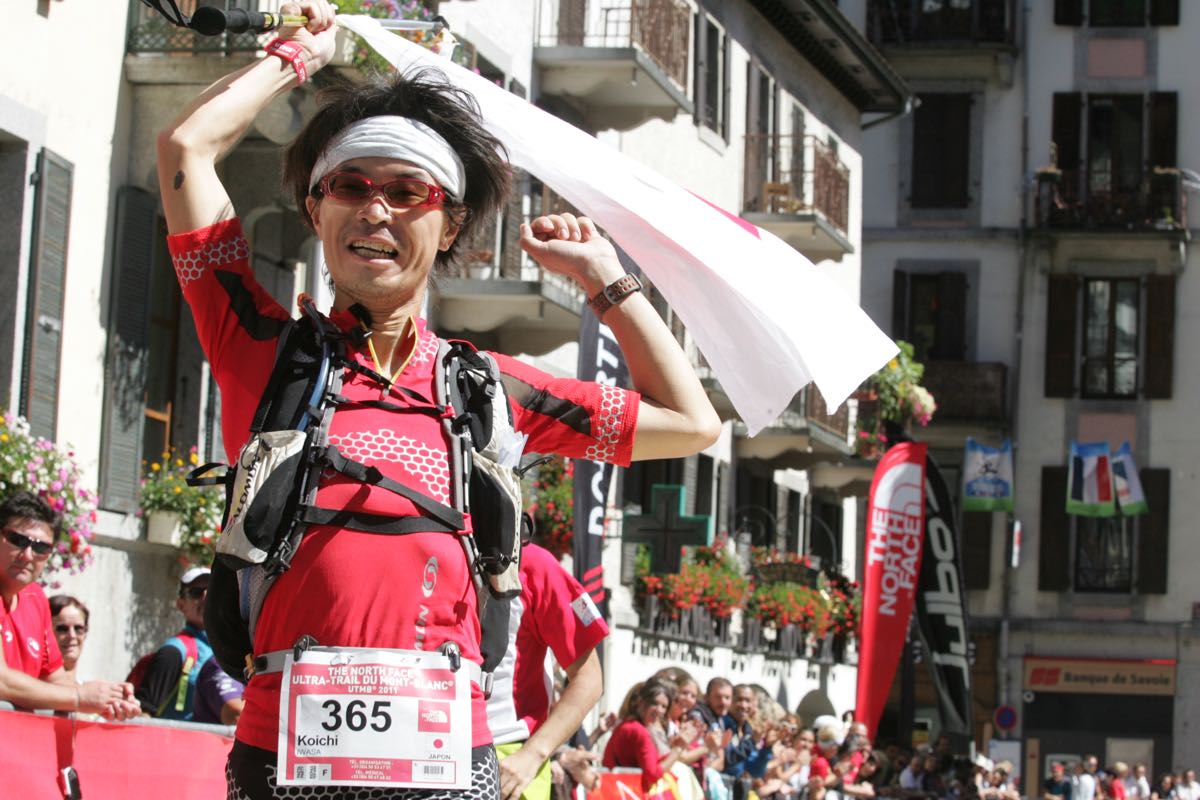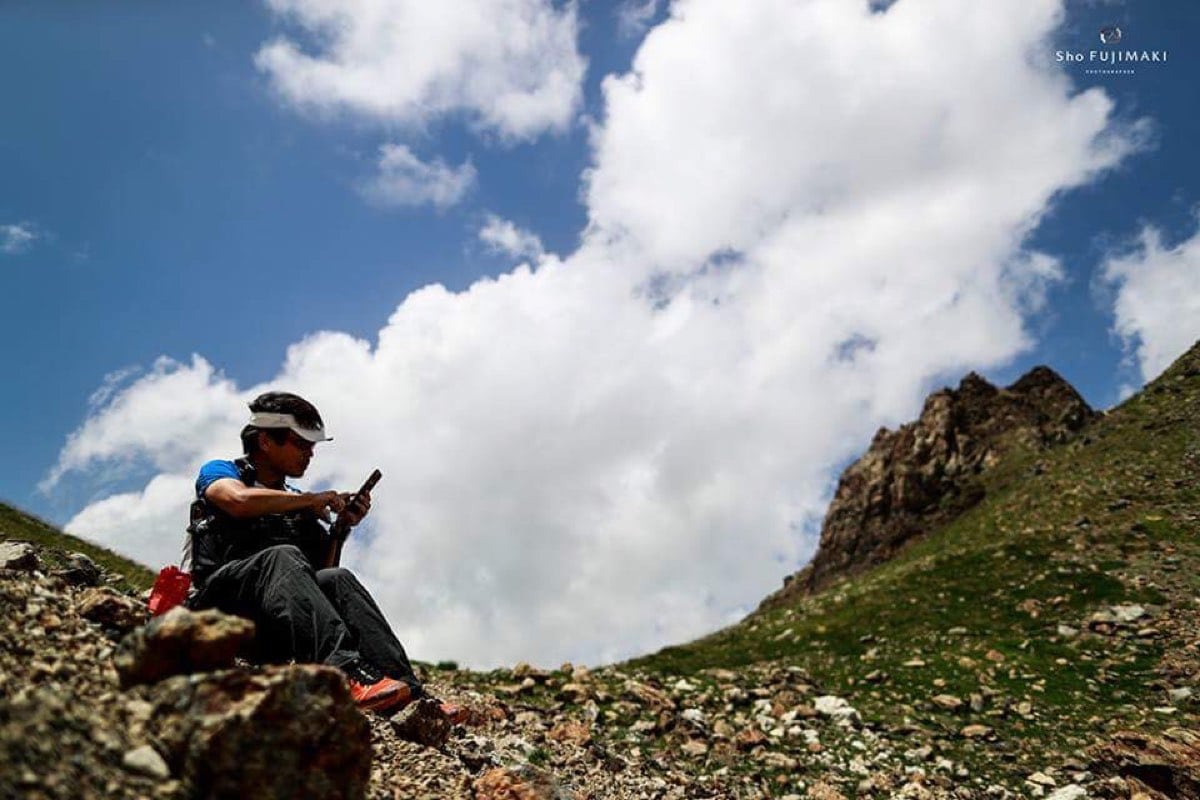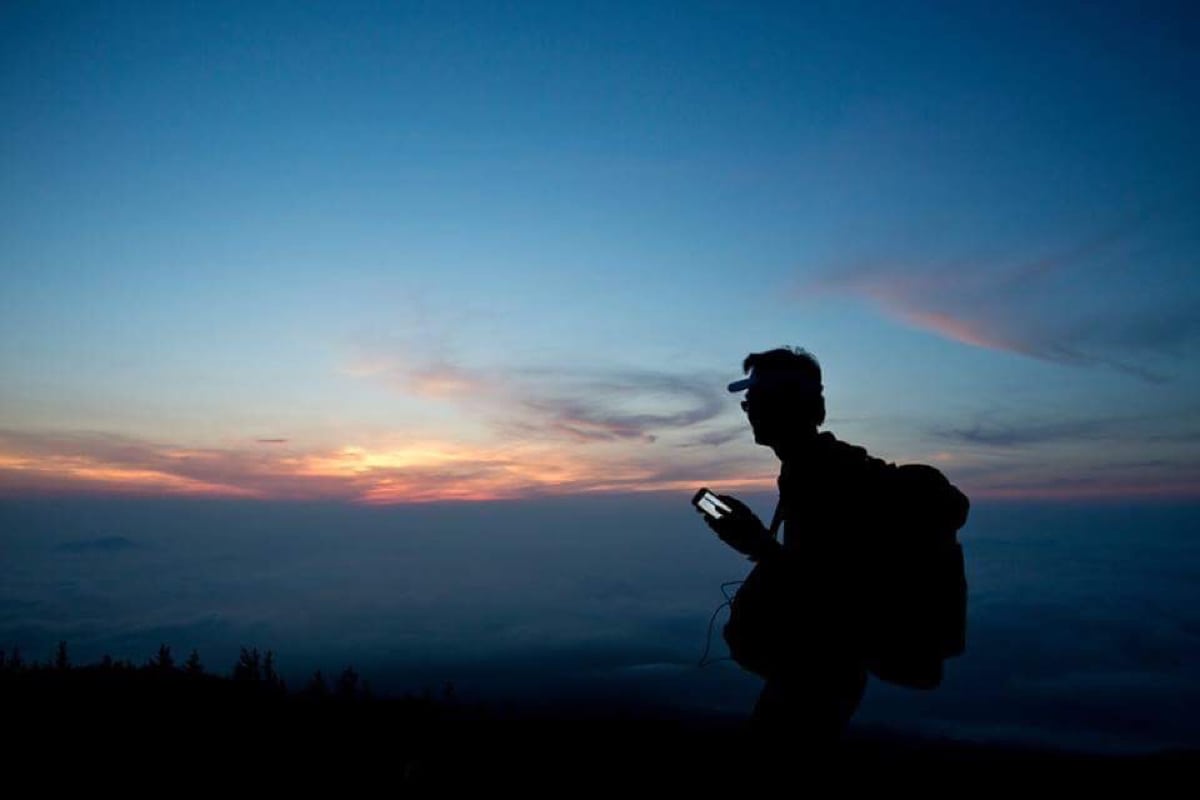When 2012 rolled around, Japan’s Koichi Iwasa had been running for a half decade. That year, he was signed up for the inaugural Ultra-Trail Mt. Fuji. With about 2,000 runners on the starting line, Koichi would be among the first to participate in the 170-kilometer event near Mount Fuji, Japan’s tallest mountain. It would be Japan’s spark into the international ultrarunning world, and also the spark for some important changes in Koichi’s own life.
Ultra-Trail Mt. Fuji (UTMF) represents a blending of the beauty and love of nature, the trails of Japan, and the capabilities of the human body and mind. The race connects the local trails, paths, and roads around Mount Fuji. A shorter sister race called Shizuoka To Yamanashi (STY) takes place at the same time. UTMF and STY were created by Tsuyoshi Kaburaki, another Japanese ultrarunner who modeled the race after what he experienced when racing internationally at Western States 100 and UTMB. These days, UTMF has grown into an international-caliber event.
For Koichi, it was the same influences that shaped UTMF which developed him into the runner he is–friends and inspiration cultivated at Western States, professionalism and skills developed at UTMB, and his desire to live life to its fullest.
Koichi is who I would call the Bryon Powell and Meghan Hicks of Japan. All three runners, all three with an endless global friends list, and all three with a deep passion for the sport of ultrarunning–these are the masters who keep ultrarunning on everyone’s minds. Koichi is the founder of DogsorCaravan.com, where he shares Japan’s ultrarunning news. The name stems from an Arabic proverb, and though he has had several chances to change it to something more attuned to running in Japan, the name has stuck in the browsers of computers all over the world. He never used to be this one-man ‘running band,’ but once he jumped in with both feet, he never looked back.
Koichi grew up in the Shiga Prefecture in Japan, then relocated to downtown Tokyo during his time at the University of Tokyo. He earned his Master of Business Administration at the Yale School of Management in the U.S. in 2000 with the ambition of a career in business. He settled into a telecom company as a financial analyst, which he really enjoyed, yet after 10 years, he unhappily found he had gained nearly 25 pounds. So, at 37 years old, he began running.
“I started wanting to not lose my life and just to get myself healthy and get some exercise,” he said. “And, this seemed like the simplest exercise. And it was good-enough exercise for me, because I was exhausted after 30 minutes.”
In 2012, he moved to Fujisawa, which was the year he met his wife Hitomi Iwasa, also an ultrarunner.
Well, as it often does, shorter training runs on the roads turned into road half marathons and full marathons in Tokyo, and then eventually he turned to the trails. The “guru” of Japanese ultrarunning, as Koichi calls him, Tsuyoshi, had just placed third in the 2009 UTMB and was featured in a documentary film on NHK, a national TV network in Japan. Afterward, Koichi set out to follow in his footsteps, literally.
The ever-changing trails were also a big reason that Koichi turned to ultrarunning and away from the roads. “I liked the changing scenery, being deep in the forest with all the views,” he said. “It changes from hard-packed trail to rocks, to muddy parts, and to lots of uphills and downhills. Everything is changing when you run, which is enjoyable but hard.”
Still in his first year of the sport, Koichi did his first ultramarathon, a 71k race called the Hasetsune Cup, a very difficult and respected Japanese trail race. It started at 1 p.m. and ran through the night, with just one aid station. During the race, as the sun sets, runners could gaze upon the beautiful Tokyo skyline and Mount Fuji profile.
“It was my first time running at night with a headlamp,” he said. “When I completed the 71k, I found myself as a true trail runner. I was on a new level of trail runner.”
When you go to Japan, expect to find breathtaking views and an environment not too different than what we find in North Carolina or Virginia in the U.S., with its four seasons and warm, humid summers. The mountains are big, steep, and difficult. And even on the country’s flatter lands, Koichi says it is a constant stream of rolling hills. And, much of them are woven through humid, dense forests.
“On the map, the trails don’t look so challenging, but once you put your foot on the trail you will be tired because of the ups and downs,” he explained.
You will also find runners willing to show you around. When Koichi first started running trails, he met and gained new friends each time he went out for a weekend long run. During the week, he typically wakes up in the morning to run up to 14k, depending on his schedule and upcoming races. He met even more people by attending a training camp put on by Tsuyoshi, which also helped him prepare for his first UTMB and Western States.
He was unable to get into the UTMB lottery in 2010, and instead signed up for the Sur les Traces des Ducs de Savoie (TDS)–a part of the UTMB festival of races–but it was cancelled due to heavy rains. In its place, he ran a reprised UTMB, which was half the course starting at Courmayeur.
“With this experience, I got more enthusiastic about UTMB,” he said. “I watched the documentary featuring [Tsuyoshi] again and again.”
Motivated and ready, he made it to the UTMB starting line in 2011 and finished in 38 hours and 49 minutes.
“It took me much longer than I expected, but I was really happy with that experience,” he said.
With one international race done, he set his eyes to others, which led him to Western States. When Koichi ran the California race for the first time, he finished in pain but happy in 25.5 hours.
“Yes, I was happy, but I could not be satisfied because I was blown out in the last 40 miles,” he said. “I learned this is a different game from UTMB and UTMF.”
After a year of training for those last 40 miles–repeating eight to 15k long uphill runs–Koichi came back to finish in 23 hours and 44 minutes.
“I was very lucky to get the silver buckle [for finishing under 24 hours] that year and it is my personal epic or my ultimate career run to now,” he said.
Another thing he experienced in California was the ease of meeting ultrarunning friends. When he arrived in Olympic Valley, at the race’s start line, in 2012, he was alone with no crew or pacer. He ended up meeting Roxana Pana and Willy Onate, who are still good friends. He also met Sabrina Okada in Robinson Flat on race day and told her that even though he didn’t have a pacer he would be okay.
“Late at night in Green Gate, she was there with a guy who was ready with my pacer bib,” he recalled. “’Here’s your pacer,’ she said. Shyamal Kapadia paced and teased me to Auburn. In 2013, I asked Roxy and Shyamal to pace me, and they helped me take the silver buckle.”
“I did not have any friends the day before the race and now I have family and volunteers and someone to run with me,” he said. “What I learned and experienced was that the U.S. ultrarunning community is understanding and friendly. I was so moved by that experience.”
Another act of runner kindness was when Koichi agreed to pace his hero Tsuyoshi at the Hardrock 100 and was shocked to find it was nearly impossible to drive to the aid stations in the San Juan Mountains. Thankfully, friends Justin Angle and Jon Webb helped him navigate this new challenge.
All this was the inspiration he needed to change paths–or trails, you might say–and commit to a life more focused on the ultrarunning world.
At Western States, Koichi also met iRunFar’s Bryon and Meghan, but it was actually back in 2010 when Koichi first stumbled upon iRunFar. He was looking for information on how to prepare for UTMB, but was sucked into the website’s race results, interviews, and gear reviews.
It all came together, reasons to start his own running-inspired website:
- UTMF became the first trail and ultra event in Japan with international athletes and global attention, and its success convinced Koichi that the ultra community needed a news media to connect Japan and the world.
- He felt that the Japanese running community did not have access to trail running resources. There was also no recognition for local running heroes and their stories.
- Koichi was losing satisfaction in his job as a financial analyst. He was someone who loved to read those stories and who thought he could make a life out of reporting on Japan’s ultrarunning news.
- The 2011 earthquake and tsunami in Japan were scary and eye opening. They forced Koichi to ask himself, What is my worth? Am I living my life with no regrets?
DogsorCaravan.com started off as his personal blog and has now turned into a hub of racing, results, reviews, and interviews with runners from all over the world. It is not just written to share stories from Japan with the rest of the world, but also to bring outside news to those in Japan, networking runners together.
Now, instead of running UTMF, Koichi has been reporting on the race for the last five years. His work has given him a premier spot to watch the rise of the sport and to meet new runners, both from Japan and abroad. He watched American Dylan Bowman win the 2018 UTMF and saw up-and-coming Japanese runner Ruy Ueda blast the course record at the Hasetsune Cup one year. He has noticed how ultrarunning in Japan has grown, but believes a few more good role models, both male and female, would help give others a hero to look toward, like he had.
Plus, a big perk, and his favorite part of the job, is traveling to other races where he can see firsthand how the world of international racing is changing.
He has observed two trends, “First, more runners in East Asia travel to other countries to run trail and ultra events. We Japanese go to China, Hong Kong, and Korea. We see more runners from those countries in our local races as well. Another is that we are seeing younger, under 30, ultra and trail runners. Ueda is 25 years old, yet he represents the elite in Japan. Takako Takamura is 25 years old and she was third female at the Skyrace Comapedrosa [in Andorra] last year.”
Koichi was invited to the 2017 Marathon des Sables as part of the reporting crew, and had a great time traveling with other journalists for seven days. He has helped out either reporting or translating at many European races, such as Transgrancanaria. He has additionally helped iRunFar cover races in Japan and around the world a number of times.
Yet, with his own website, keeping it up to date and balanced is still a learning act each day.
“It is a lot of work,” he admits. “I do the results of races, write gear reviews, and organize the website. Yeah, I do all of it.”
As a business man turned journalist, he had no experience with writing or photojournalism. Yet, he jumps on every opportunity to travel to new places and makes it work. He reads iRunFar for inspiration on different stories, he works with Japanese brands for gear reviews, and he follows the work of fellow photojournalists like Sho Fujimaki and Shimpei Koseki.
To Koichi, the work is worth it, because DogsorCaravan does what he believes was needed in his community.
“In Japan, I feel alone because I may be the only man who devoted my life and career to this sport and I believe I was the most enthusiastic person in Japan to read international resources of our sport when I started the site,” he said. “But I am encouraged when I remember I am a member of the international community and am encouraged by fellow journalists and photographers.”
“Koichi has been our sport’s link to the world of Japanese trail and ultrarunning for over a half decade,” explains iRunFar’s Meghan. “On a more personal level, he’s helped iRunFar cover UTMF several times, as well as many other global races. I occasionally email him to ask ‘What about this Japanese athlete?’ or ‘How good is this Japanese race result?’ and Koichi’s fast to fill me in on how he thinks that runner fits into the global race scene. But more than all of this, he’s just genuinely one of the nicest and warmest people I work with out there. Our sport is better, kinder, and smarter because of Koichi. ”
Now, when Koichi arrives at the UTMF race site each year, wearing a camera instead of a race bib, he is acknowledged. He is known and thanked by locals and foreign runners for being there and being devoted. They are the readers of DogsorCaravan and they are just as enthusiastic, thanks to Koichi’s own work and enthusiasm. It’s safe to say that not only has Koichi brought international ultrarunning to Japan, but he has brought Japanese ultrarunning to the world.
Call for Comments (from Meghan)
- Do you know Koichi Iwasa of DogsorCaravan?
- Can you comment to share a story about running or working as a journalist with Koichi?
